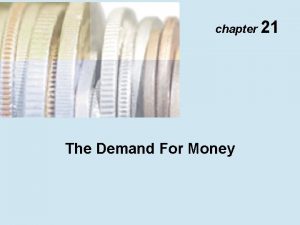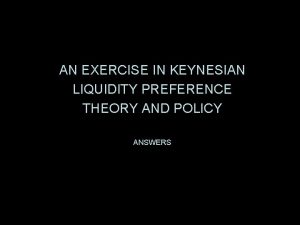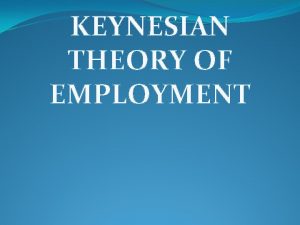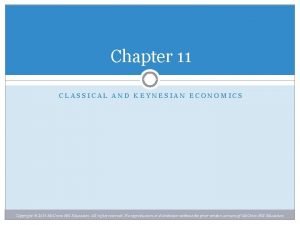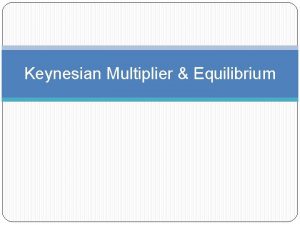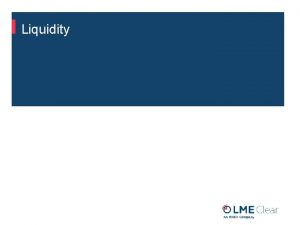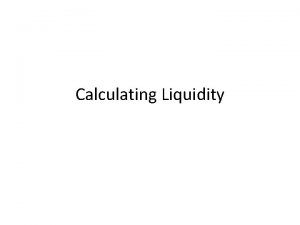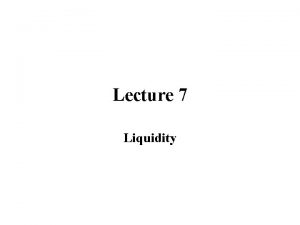AN EXERCISE IN KEYNESIAN LIQUIDITY PREFERENCE THEORY AND





- Slides: 5

AN EXERCISE IN KEYNESIAN LIQUIDITY PREFERENCE THEORY AND POLICY ANSWERS

The speculative demand for money is unique to Keynesian macroeconomics and, according to some, is the sine qua non of Keynesianism. This special demand curve is non- IN i TE R RM EG E IO DIA N TE CLASSICAL REGION EXTREME KEYNESIAN REGION MSPEC linear and has three identifiable regions: At the In rates “intermediate of interest so region, ” highthat low that the virtually no quantity of money one believes holdings they are likely to go still demanded varies higher, lower, inversely the with the speculative rate of interest. demand for money is perfectly inelastic becomes perfectlyand elastic. is co. In this incident with “extreme Keynesian the vertical region, ” axis. all This is the “classical additions to the region, ” money supply so named are because simply hoarded. in the classical theory, there is no speculative demand for money.

In the Keynesian model, the accumulation of large speculative balances implies that people expect the rate of interest to rise. They do not want to hold bonds because the interest rate and bond prices are inversely related. If the supply of money remains constant, the high speculative demand implies a low level of transactions balances, which corresponds to a low level of income. i i LM MSPEC Y At full-employment income, the Fed's policy rule of "Print money to hold but not money to spend" may not be a viable policy because the speculative demand for money is too unstable. Besides, the Fed may not have an unambiguous indicator of the needed policy because its timely information includes the


AN EXERCISE IN KEYNESIAN LIQUIDITY PREFERENCE THEORY AND POLICY ANSWERS
